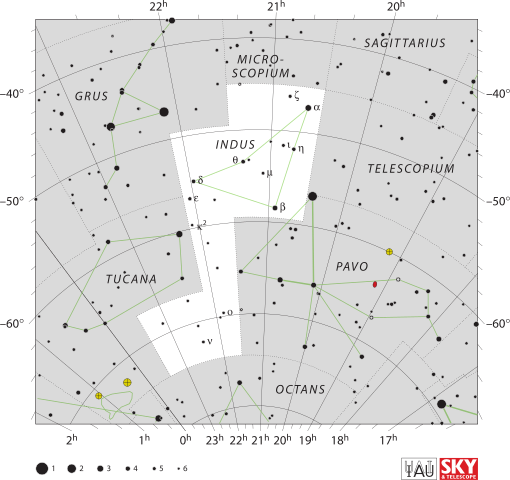- Star Tales - Indus (ianridpath.com)
Indus is one of the 12 figures formed by the Dutch navigators Pieter Dirkszoon Keyser and Frederick de Houtman from stars they charted in the southern hemisphere on their voyages to the East Indies at the end of the 16th century. It was first shown in 1598 on a globe by the Dutch cartographer Petrus Plancius and first appeared in print in 1603 on the Uranometria atlas of Johann Bayer.
- Indus (constellation) (Wikipedia)
Indus is a constellation in the southern sky first professionally surveyed by Europeans in the 1590s and mapped on a globe by Petrus Plancius by early 1598. It was included on a plate illustrating southern constellations in Bayer’s sky atlas Uranometria in 1603. It lies well south of the Tropic of Capricorn but its triangular shape can be seen for most of the year from the Equator. It is elongated from north to south and has a complex boundary. The English translation of its name is generally given as the Indian, though it is unclear which indigenous people the constellation was originally supposed to represent.
